Table of Contents
Are you struggling with balance issues that hinder your daily activities and overall well-being? Regain your equilibrium and enhance your coordination with Kizworld's comprehensive guide on How to improve your balance. Discover a wealth of practical exercises, tips, and lifestyle adjustments to restore your balance and move with confidence. Whether you're an active individual seeking to optimize your performance or an older adult looking to prevent falls, our in-depth guide provides a personalized roadmap to better balance.
How to Improve Your Balance: Master the Art of Stability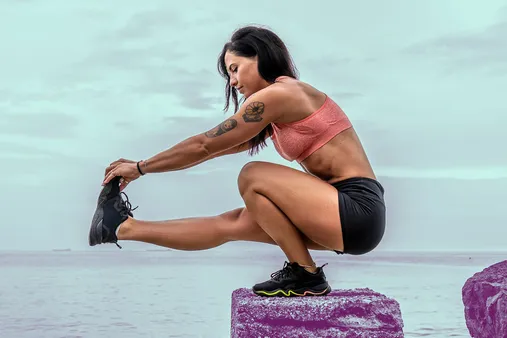
I. Understanding Balance and Its Significance
Understanding Balance and Its Significance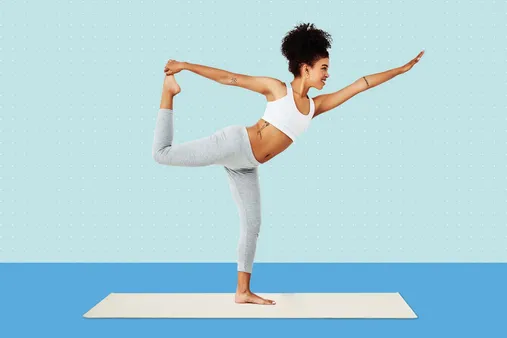
Balance: A Cornerstone of Movement and Stability
Balance is a fundamental aspect of human movement and stability. It allows us to maintain an upright posture, navigate uneven surfaces, and perform complex motor skills. Balance is achieved through the coordinated effort of multiple systems, including the vestibular system, proprioceptive system, and visual system.
The vestibular system, located in the inner ear, provides information about head movement and orientation in space. The proprioceptive system, located in muscles, tendons, and joints, provides information about body position and movement. The visual system provides information about the environment and helps us maintain balance by adjusting our posture and movements.
- Vestibular System: Senses head movement and orientation.
- Proprioceptive System: Senses body position and movement.
- Visual System: Provides information about the environment.
Benefits of Good Balance
Good balance has numerous benefits for individuals of all ages. It helps prevent falls, improves athletic performance, enhances coordination, and promotes overall well-being. Maintaining good balance is particularly important for older adults, as it can help reduce the risk of falls and associated injuries.
Good balance can also improve athletic performance by enhancing coordination and agility. Athletes with good balance are better able to change direction quickly, react to sudden movements, and maintain control during dynamic activities.
Benefit | Explanation |
Fall Prevention | Reduces the risk of falls, especially in older adults. |
Improved Athletic Performance | Enhances coordination, agility, and reaction time. |
Enhanced Coordination | Improves the ability to perform complex motor skills. |
Promotes Overall Well-being | Contributes to better posture, stability, and confidence. |
Factors Affecting Balance
Several factors can affect balance, including age, physical fitness, neurological conditions, and medications. As we age, our balance naturally declines due to changes in the vestibular system, proprioceptive system, and visual system. Physical fitness also plays a role in balance, as stronger muscles and better flexibility contribute to improved stability.
Neurological conditions such as Parkinson's disease and multiple sclerosis can also affect balance. Certain medications, such as sedatives and tranquilizers, can also impair balance. It is important to consult with a healthcare professional if you are experiencing balance problems.
- Age: Balance naturally declines with age.
- Physical Fitness: Stronger muscles and better flexibility contribute to improved balance.
- Neurological Conditions: Conditions like Parkinson's disease and multiple sclerosis can affect balance.
- Medications: Certain medications, such as sedatives and tranquilizers, can impair balance.
II. Simple Exercises to Enhance Balance
Simple Exercises to Enhance Balance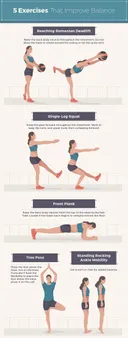
Single-Leg Stand
- Stand with your feet shoulder-width apart.
- Lift your right leg off the ground, bending your knee at a 90-degree angle.
- Hold this position for 30 seconds, then switch legs.
- Repeat for 2-3 sets of 10-12 repetitions.
This exercise helps to strengthen your ankle and knee joints, as well as your core muscles. It also improves your balance and coordination.
Heel-Toe Walk
- Start with your feet together.
- Take a step forward with your right foot, placing your heel in front of your left toe.
- Then, take a step forward with your left foot, placing your heel in front of your right toe.
- Continue walking in this manner for 20-30 steps.
This exercise helps to improve your balance and coordination, as well as your proprioception (your sense of body position).
Clock Reach
- Stand with your feet shoulder-width apart and your arms at your sides.
- Imagine a clock face in front of you, with 12 o'clock at the top and 6 o'clock at the bottom.
- Slowly reach your right arm up to 12 o'clock, then down to 6 o'clock.
- Repeat this movement for 10-12 repetitions, then switch arms.
This exercise helps to improve your balance and coordination, as well as your range of motion in your shoulders and arms.
Balance Board
- Stand on a balance board with your feet shoulder-width apart.
- Shift your weight from side to side, front to back, and in a circular motion.
- Try to keep your balance for as long as possible.
- Start with 30 seconds and gradually increase the duration as you get better.
This exercise helps to improve your balance and coordination, as well as your proprioception. It also strengthens your core muscles and ankles.
Yoga
- Yoga is a great way to improve your balance, coordination, and flexibility.
- There are many different yoga poses that can help you to improve your balance, such as the tree pose, the warrior pose, and the downward-facing dog.
- Start with a beginner yoga class and gradually increase the difficulty of the poses as you get stronger.
Yoga is a great way to improve your overall health and well-being, in addition to improving your balance.
Benefit | Explanation |
Reduced risk of falls | As you age, your balance naturally declines. This can increase your risk of falls, which can lead to serious injuries. |
Improved athletic performance | Good balance is essential for many sports, such as running, basketball, and tennis. |
Enhanced coordination | Balance and coordination are closely linked. Improving your balance can also help to improve your coordination. |
Better posture | Good balance helps to maintain good posture. This can reduce pain and discomfort in your back, neck, and shoulders. |
Increased confidence | When you have good balance, you feel more confident in your ability to move around safely. This can lead to a more active and fulfilling life. |
Improving your balance is a simple and effective way to improve your overall health and well-being. By following these exercises, you can improve your balance and coordination, reduce your risk of falls, and enjoy a more active and fulfilling life.
If you have any concerns about your balance, talk to your doctor. They can help you to determine if there is an underlying medical condition that is causing your balance problems.
Check out our related posts on How to Improve Your Flexibility and Mobility with Gymnastics, The Best Gymnastics Exercises for Core Strength, and How to Master the Basic Gymnastics Skills for more tips on how to improve your balance and coordination.
III. Lifestyle Adjustments for Improved Balance
Lifestyle Adjustments for Improved Balance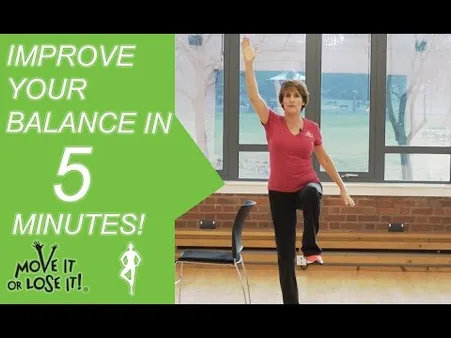
Regular Exercise
- Engaging in regular physical activity can help improve your balance and coordination.
- Activities like walking, swimming, and cycling are great for maintaining balance.
- Strength training exercises that target your core and lower body muscles can also enhance your stability.
Read more about exercises for improving flexibility and mobility with gymnastics.
Healthy Diet
- Eating a balanced diet rich in fruits, vegetables, and whole grains can provide your body with the nutrients it needs to maintain good balance.
- Foods high in calcium, such as dairy products and leafy green vegetables, are particularly important for bone health and can help prevent falls.
- Staying hydrated is also crucial, as dehydration can lead to dizziness and impaired balance.
Read more about exercises for core strength with gymnastics.
Adequate Sleep
- Getting enough sleep is essential for overall health and well-being, including balance.
- When you're sleep-deprived, you may experience fatigue, dizziness, and impaired coordination, all of which can increase your risk of falls.
- Aim for 7-8 hours of quality sleep each night to support your balance and overall health.
Read more about mastering basic gymnastics skills.
Fall Prevention Measures
- Taking steps to prevent falls is crucial for maintaining good balance, especially as you age.
- Ensure your home is well-lit and free of tripping hazards, such as loose rugs or clutter.
- Install grab bars in your bathroom and use non-slip mats in the shower or bathtub to reduce the risk of slipping.
Read more about top gymnastics competitions and events.
Balance Exercises
- Incorporating balance exercises into your routine can help improve your stability and coordination.
- Exercises like standing on one leg, walking heel-to-toe, or performing tai chi can challenge your balance and help you maintain it.
- Start slowly and gradually increase the difficulty of the exercises as you progress.
Read more about famous gymnasts of all time.
Consult a Healthcare Professional
- If you're experiencing persistent balance problems, it's important to consult a healthcare professional.
- They can assess your condition and determine if there's an underlying medical cause that needs to be addressed.
- They can also recommend specific exercises or therapies to help improve your balance.
Read more about training like a gymnast.
IV. Additional Tips for Maintaining Balance
Additional Tips for Maintaining Balance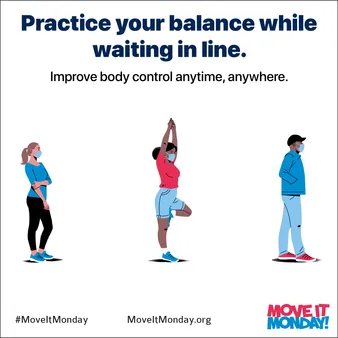
Focus on Your Core
Your core muscles play a vital role in maintaining balance. By strengthening your core, you can improve your ability to control your body's movements and maintain your equilibrium.
There are several exercises you can do to strengthen your core, such as planks, sit-ups, and crunches. You can also incorporate core-strengthening exercises into your daily routine, such as standing on one leg while brushing your teeth or doing lunges while you're waiting in line.
Exercise | Benefits | How to Do It |
Plank | Strengthens the entire core | Hold a push-up position with your forearms on the ground and your body in a straight line from head to heels. |
Sit-up | Strengthens the abdominal muscles | Lie on your back with your knees bent and your feet flat on the ground. Raise your torso until you are sitting up, then slowly lower back down. |
Crunch | Strengthens the abdominal muscles | Lie on your back with your knees bent and your feet flat on the ground. Place your hands behind your head and lift your shoulders off the ground, then slowly lower back down. |
Learn more about core-strengthening exercises.
Stretch Regularly
Stretching can help to improve your flexibility and range of motion, which can make it easier to maintain your balance. It can also help to reduce muscle soreness and stiffness, which can also contribute to balance problems.
There are many different stretches you can do to improve your balance, such as standing calf stretches, seated hamstring stretches, and quadriceps stretches. You can also incorporate stretching into your daily routine, such as stretching your arms and legs in the morning or taking a yoga class.
- Standing Calf Stretches: Holding a wall or chair, place one leg straight back slightly behind the other. Bend your front knee and lean forward until you feel a stretch in your calf.
- Seated Hamstring Stretches: Sit on the floor with one leg extended straight out in front of you. Bend your other leg and place your foot on the inside of your extended leg. Lean forward until you feel a stretch in your hamstring.
- Quadriceps Stretches: Stand facing a wall or chair. Place one leg straight back slightly behind the other. Bend your front knee and grab your ankle with your hand. Pull your heel toward your buttocks until you feel a stretch in your quadriceps.
Learn more about stretching exercises
Wear Proper Footwear
Wearing the proper footwear can help to improve your balance and prevent falls. Look for shoes that have a wide base and low heels. Avoid shoes that are slippery or have high heels, as these can make it more difficult to maintain your balance.
If you have balance problems, you may want to consider wearing shoes with built-in arch support or cushioning. These shoes can help to provide additional stability and support.